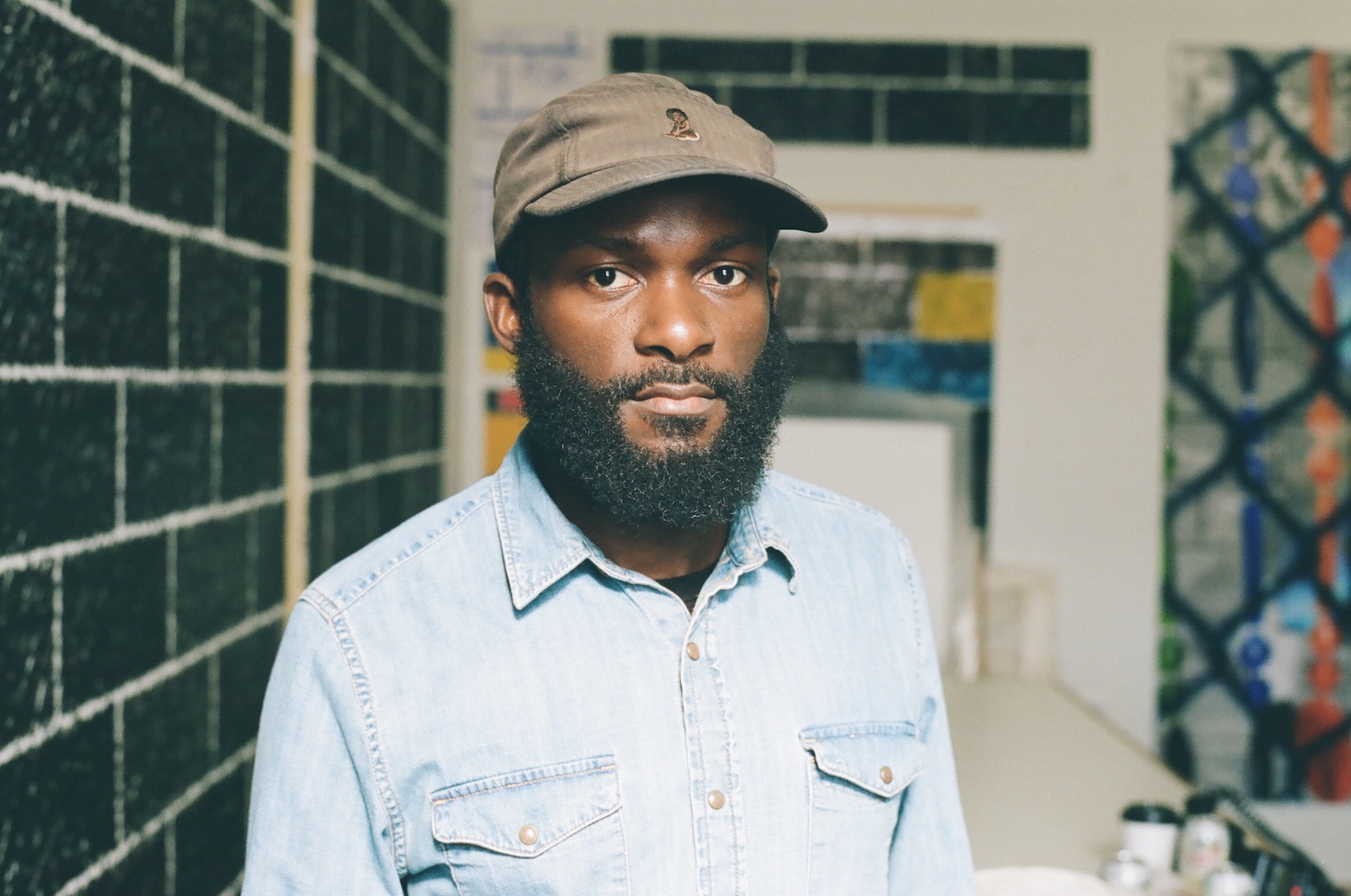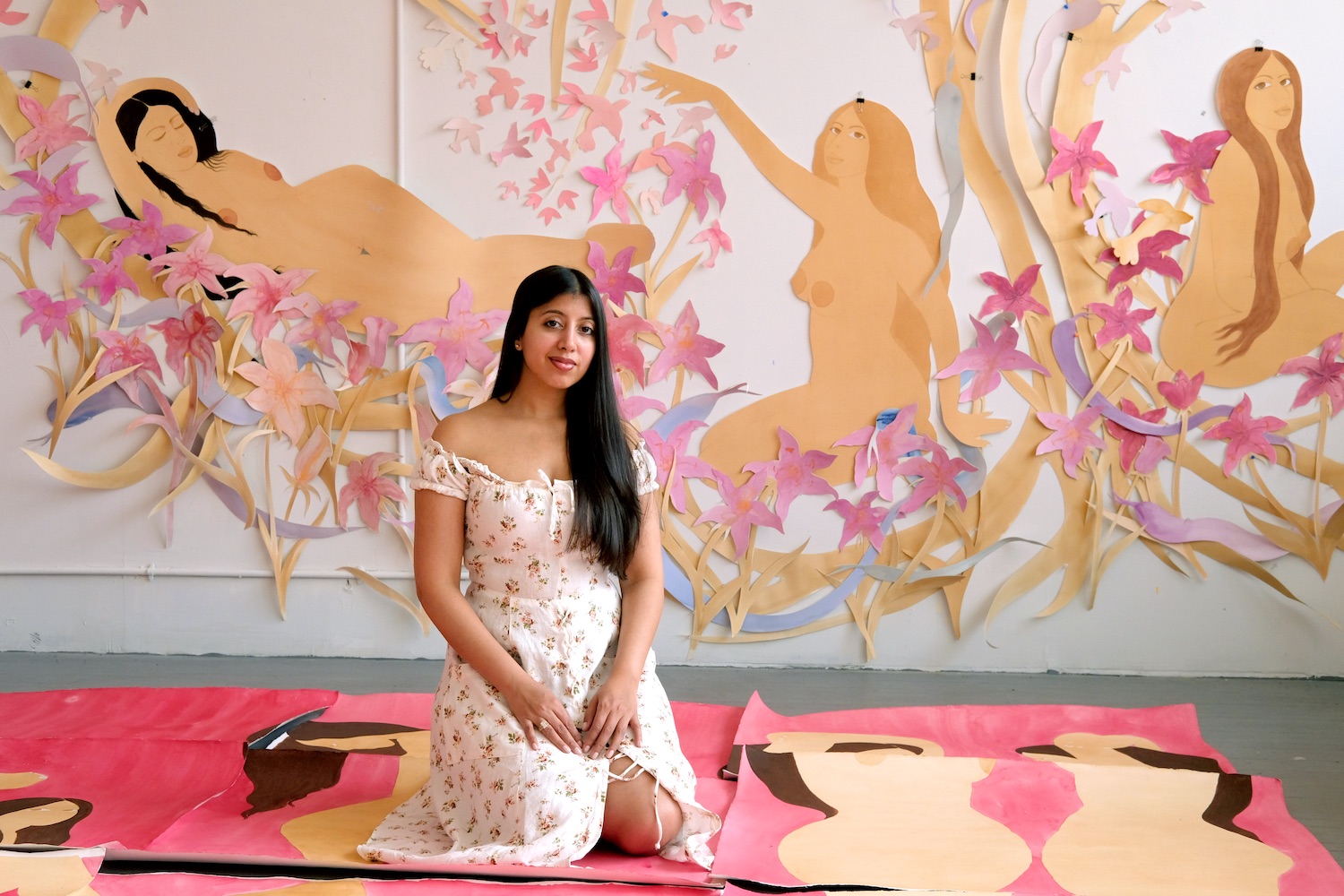Paul Anthony Smith’s exhibition, “Tradewinds,” is on view through April 3 at Jack Shainman Gallery. The new work explores his Caribbean lineage and the roles of legacy, cartography, and geography in determining the footprint we leave on the world. Featuring the artist’s signature, photographic picotages, “Tradewinds” marks a shift in Smith’s practice, as he moves away from prominent imagery once typically incorporated in his work.
Peaked by his personal history and the weight of the global events of the last year—specifically the pandemic and deaths of George Floyd and Breonna Taylor—Smith poses questions in the images on view surrounding life and death, like “Why are people suddenly treated as more significant after they’ve left this earth?” The artist uses imagery familiar to his life and heritage as a channel through which he searches for ways to actively see humanity as it happens around us, diving into the Caribbean culture.
Whitewall heard from the artist about the making of “Tradewinds.”
WHITEWALL: What was the starting point for “Tradewinds”? How did you come to the title?
PAUL ANTHONY SMITH: After traveling to London and attending the Nothing Hill Carnival in 2019, I began thinking of the complexities of Caribbean migrations and about the Caribbean passengers who sailed to London on the HMT Empire Windrush during the 1950s. This history prompted me to travel to a few Caribbean nations in 2020, shortly before the covid-19 lockdown.
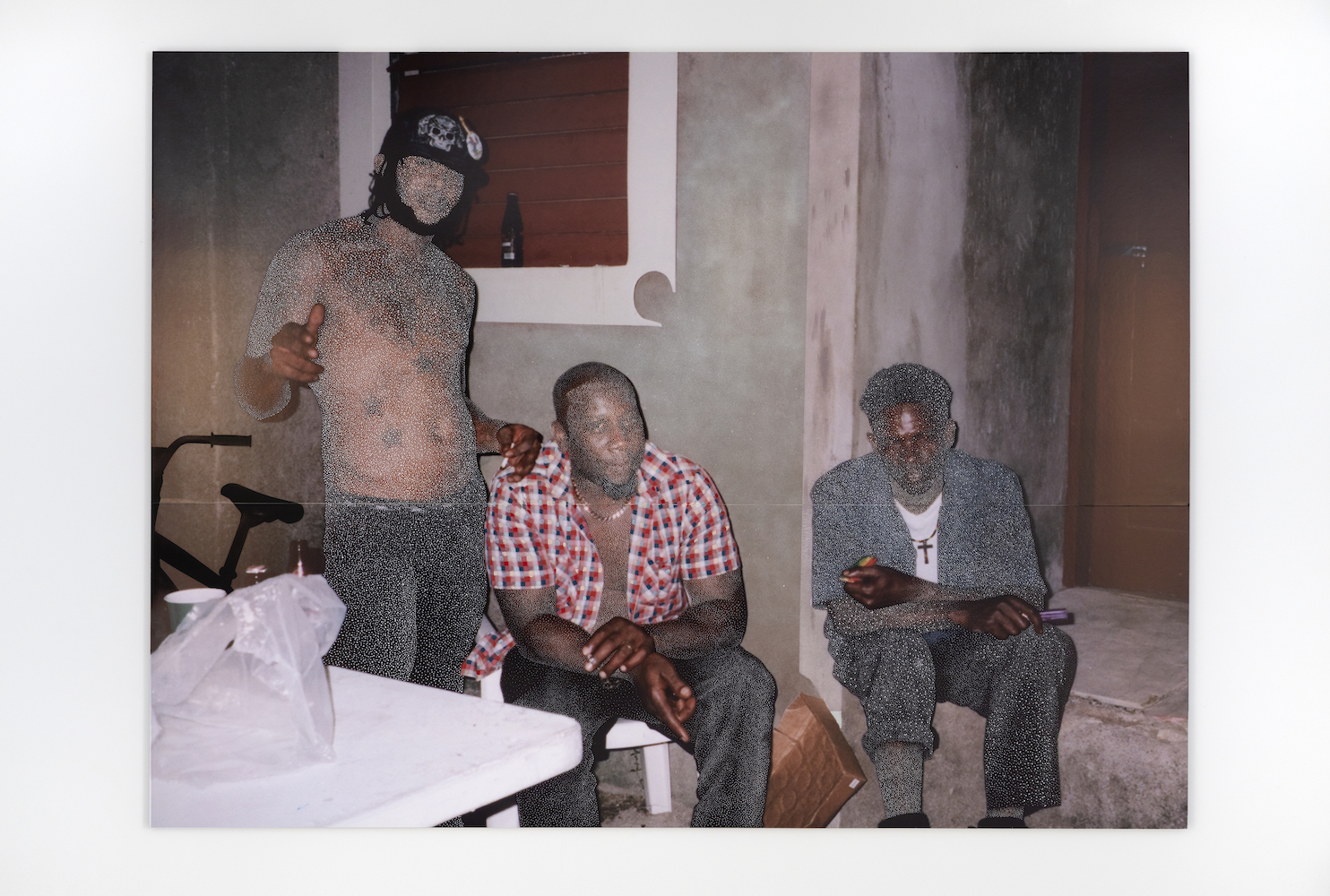
Paul Anthony Smith, “Untitled,” 2020 -21, unique picotage, spray paint and acrylic paint on inkjet print, mounted on museum board and sintra, 72 x 96 inches; © Paul Anthony Smith, courtesy of the artist and Jack Shainman Gallery, New York.
WW: Tell us about exploring themes of life, death, and the reality of our existence in works like Untitled (Dead Yard). Why were you drawn to these topics?
PAS: During the time that I made Dead Yard, I was also making paintings in the studio and was specifically working on a portrait of a Black police officer vaguely standing on a corner. This was reflecting on police officers in my neighborhood of Bed-Stuy, Brooklyn standing on corners as a nightly visual presence, but also thinking of how much their presence symbolizes death throughout the American landscape and how death is a part of life.
I’m always interested in celebrations of life and how Black death by police brutality has traumatized Black America. Death is also an omnipresence celebrated in Caribbean traditions.
It’s my awareness of these two topics juxtaposed, which I wanted to highlight in Dead Yard.

Installation view of Paul Anthony Smith’s “Tradewinds,” © Paul Anthony Smith, courtesy of the artist and Jack Shainman Gallery, New York.
WW: You’ve used these works to pose questions on why the deaths of George Floyd and Breonna Taylor suddenly made their lives viewed as more significant. With this in consideration, what steps are you taking to acknowledge and celebrate the humanity around you?
PAS: I think I’ve been a lot closer to friends and family in the last year than before. I had many introspective moments over the past year where I’ve picked up the phone and made an effort to reach out to those close to me, either with a text or a call. I found myself being more vulnerable as 2020 progressed and it dawned on me that people including George Floyd and Breonna Taylor did not imagine their lives ending in such tragedy, or that their names would take on such a worldly presence. We now uplift and celebrate their names to make change.
WW: In your experience, what aspects of Caribbean culture personifies this idea of actively seeing humanity? How did you incorporate these solutions or actions into the works on view?
PAS: I think with “Tradewinds,”
I gave more than I usually do. I depicted friends and family living a normal life and how they functioned in a dominantly Black nation. I think if more Black people were living their normal lives in American society, we would see more humanity than what is often portrayed of us. Think of how differently society would be if the incarceration rate of Black and brown people reflected the 13% of the population that they represent in the United States.
WW: A few motifs often included in your picotages (like breeze blocks and brick walls) aren’t seen in these works on view. Can you tell us how you ended up moving away from this type of imagery and opting for settings that appear to occur more naturally?
PAS: The work naturally progressed from the breeze blocks to more intimate portraits. While I’ve continued to make some picotage works in these patterns, I made an effort with this new series to highlight the Caribbean islands and various distinctive architectural elements used in those trade wind locations. As a maker, I chose what elements I wanted to highlight, so how I approached picotage evolved. I also find it hard to see the work while it’s being produced in the studio.
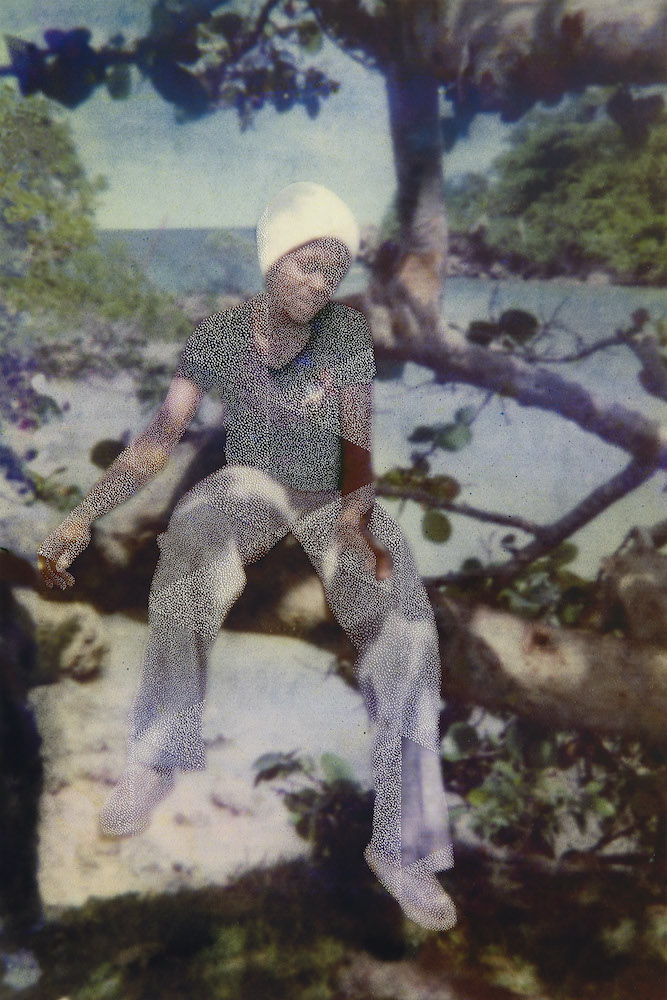
Paul Anthony Smith, “Untitled,” 2020 -21, unique picotage with spray paint on inkjet print, mounted on museum board and sintra 60 x 40 inches; © Paul Anthony Smith, courtesy of the artist and Jack Shainman Gallery, New York.
WW: Something else you’ve considered in “Tradewinds” is the roles cartography, geography, and family have on our fate. How would you say these predetermined elements have affected your life trajectory and artistic practice?
PAS: I don’t think I would have existed if it weren’t for fate, the way in which life has progressed. There are many stories I’ve heard from my parents of what life was like before my existence. These stories have played into what I create and how it’s seen. In a way, it’s an escape to retrace my ancestral steps. I often ask myself, what is the purpose of life?
WW: You use tools from your ceramics training to alter your pigment prints, distorting the texture and perception of depth. Can you describe the process of creating one of your picotages and how you began incorporating these techniques?
PAS: I first began this process about nine years ago. While working on a few small ceramic sculptures, I intentionally began scratching away at a drawing on a pigment print with a needle. The scratches began jagged and later organized pics. The current works are far from where I began with a flimsy needle tool, appearing much stronger and thicker in diameter through my use of a chisel-like tool.
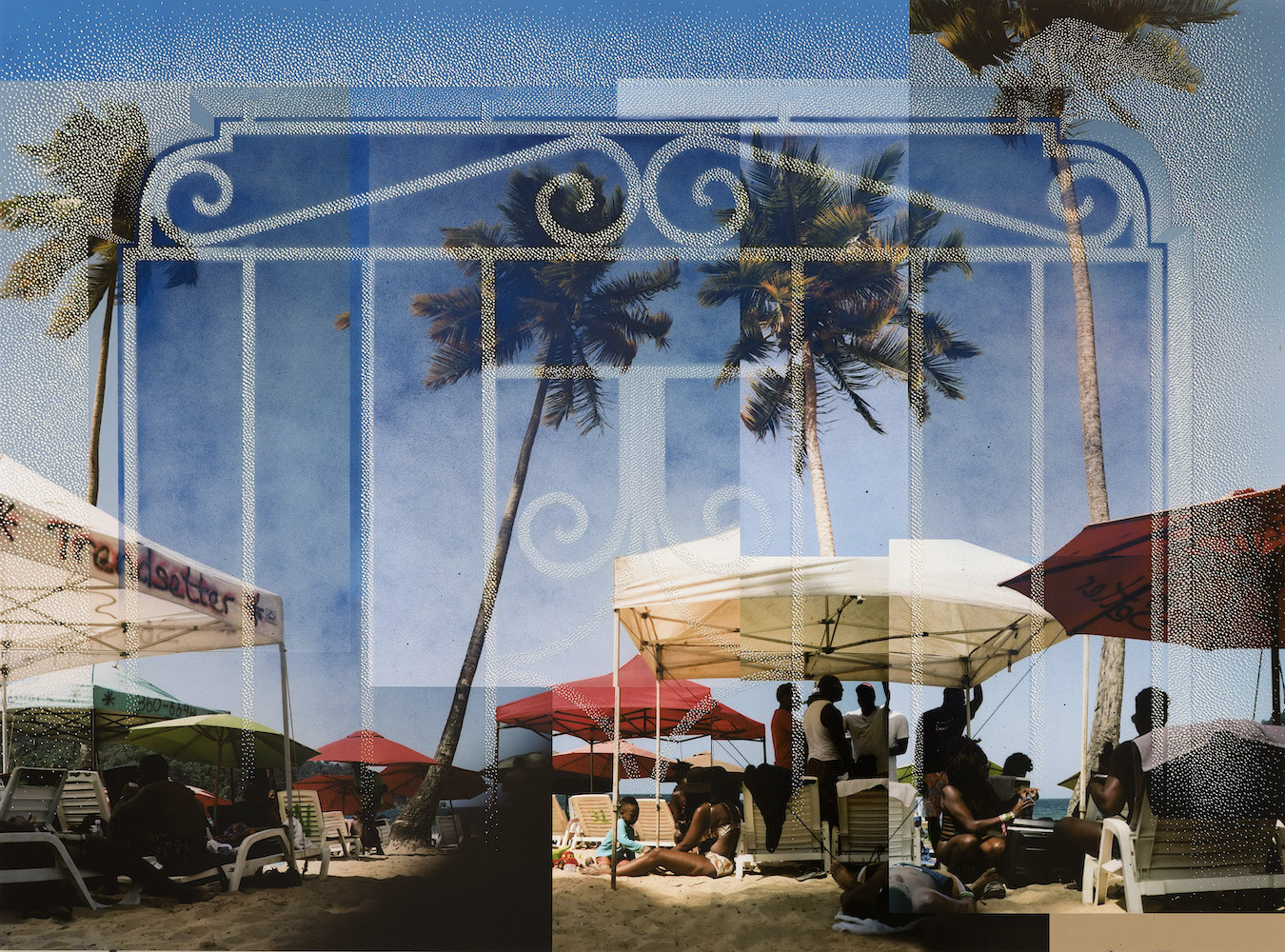
Paul Anthony Smith, “Breeze off yu soul,” 2020-21, unique picotage with spray paint on inkjet print, mounted on museum board and sintra, 40 x 54 inches; © Paul Anthony Smith, courtesy of the artist and Jack Shainman Gallery, New York.



